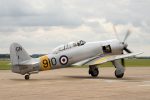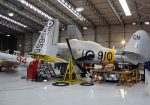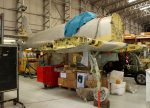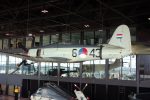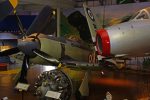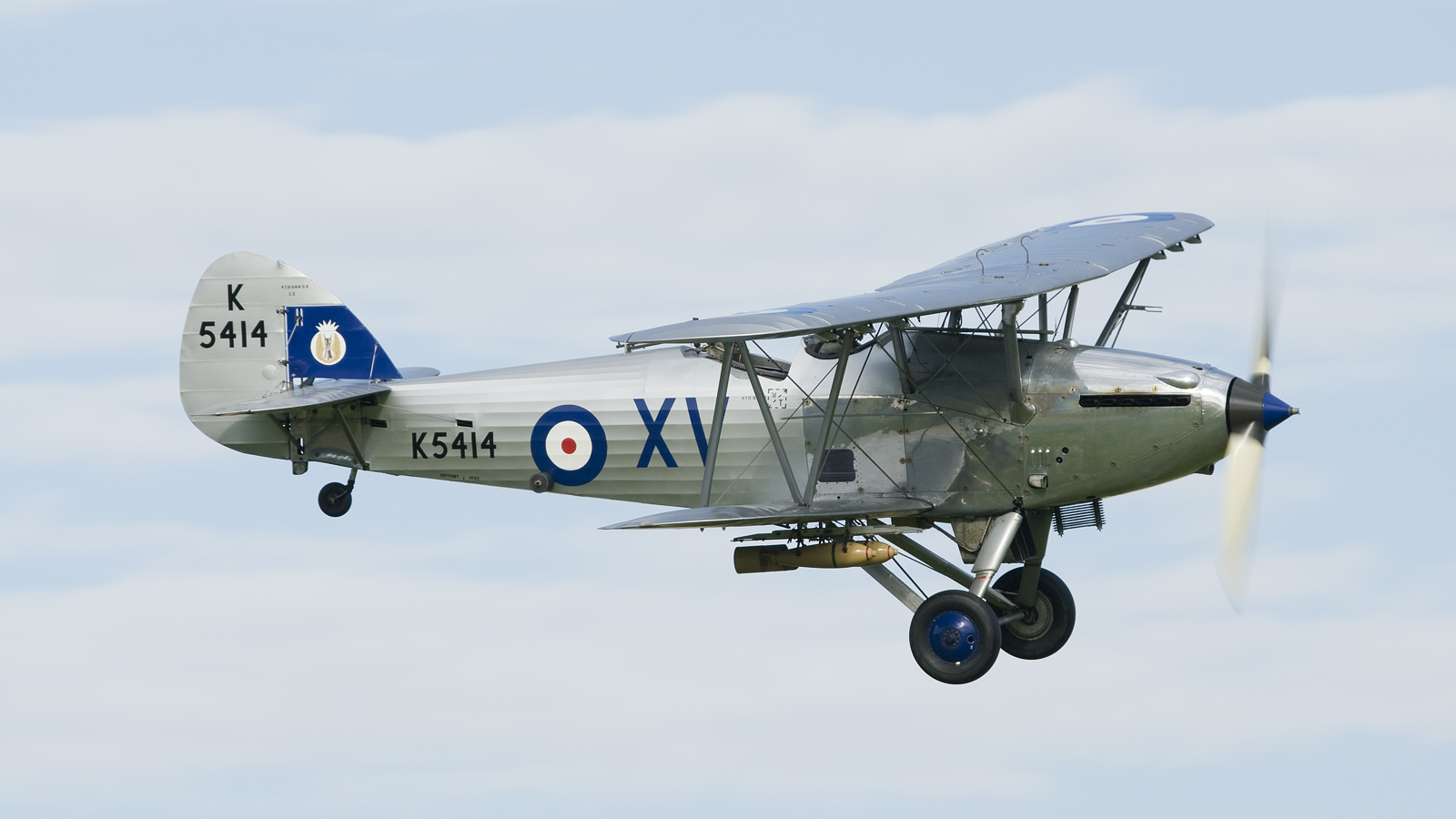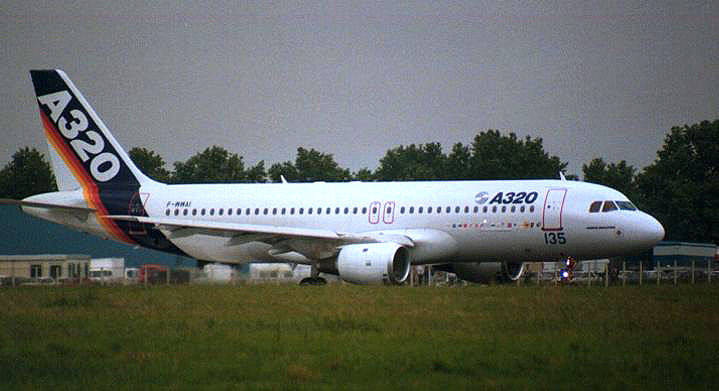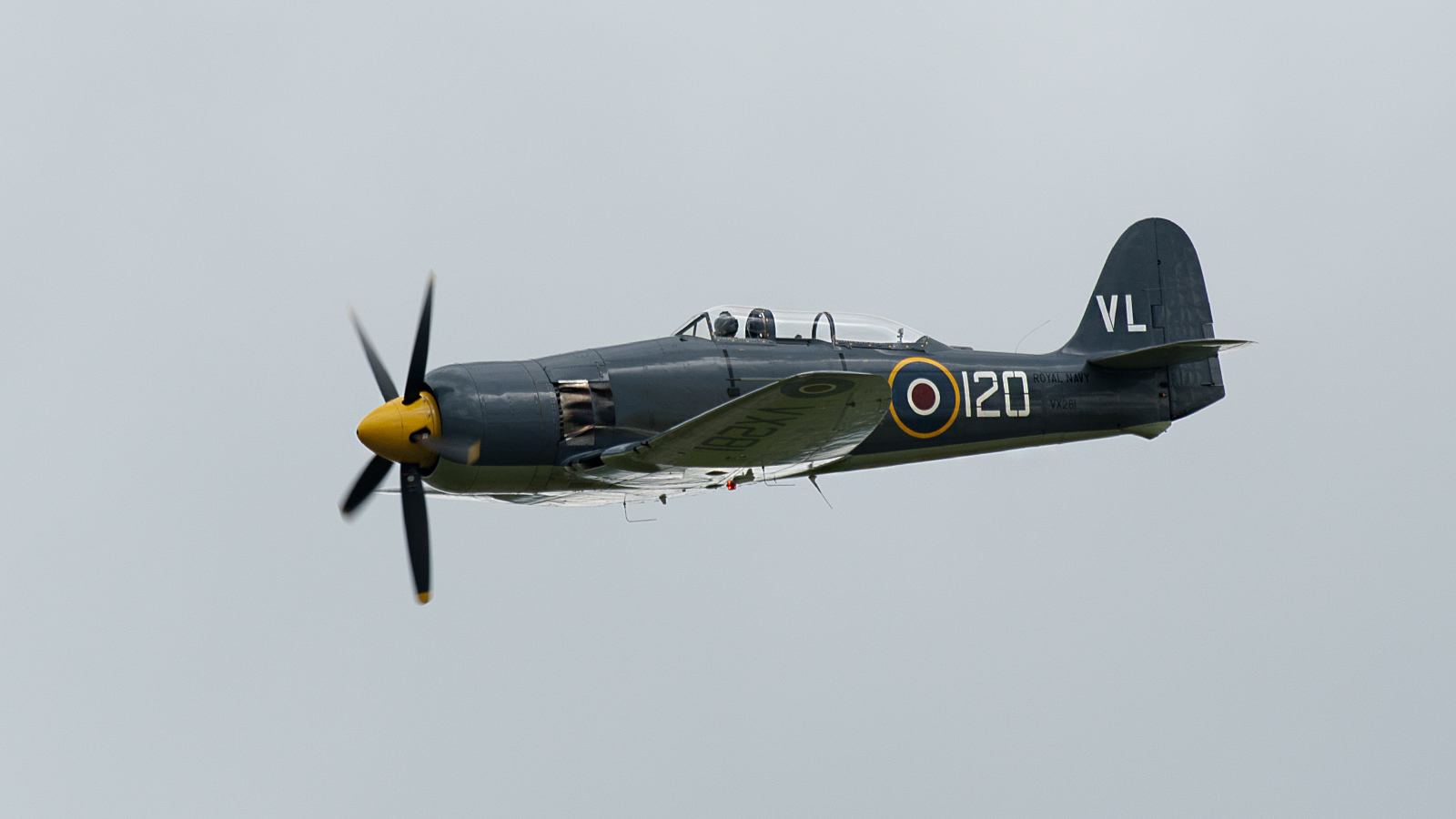
The Hawker Fury/Sea Fury is a British fighter aircraft designed and manufactured by Hawker Aircraft. It was the last propeller-driven fighter to serve with the Royal Navy, and one of the fastest production single reciprocating engine aircraft ever built. Developed during the Second World War, the Sea Fury entered service two years after the war ended. It proved to be a popular aircraft with a number of overseas militaries, and was used during the Korean War in the early 1950s, as well as against the 1961 Bay of Pigs Invasion of Cuba.
| Role | Naval fighter-bomber |
|---|---|
| Manufacturer | Hawker |
| Designer | Sydney Camm |
| First flight | 1 September 1944 (Fury) 21 February 1945 (Sea Fury) |
| Introduction | August 1947 (RCN); September 1947 (RN) |
| Retired | 1953 (FAA) 1955 (RNVR) 1956 (RCN) 1957 (MLD) 1968 Burmese Air Force |
| Primary users | Royal Navy Royal Australian Navy Royal Canadian Navy Royal Netherlands Navy Pakistan Air Force |
| Produced | 1945–1955 |
| Number built | 864 |
| Developed from | Hawker Tempest |
Specifications (Sea Fury FB.11)
General characteristics
- Crew: 1
- Length: 34 ft 8 in (10.57 m)
- Wingspan: 38 ft 4.75 in (11.7031 m)
- Height: 15 ft 10.5 in (4.839 m)
- Wing area: 280 sq ft (26 m2)
- Empty weight: 9,240 lb (4,191 kg)
- Gross weight: 12,350 lb (5,602 kg)
- Max takeoff weight: 14,650 lb (6,645 kg)
- Powerplant: 1 × Bristol Centaurus 18 18-cylinder air-cooled radial piston engine, 2,480 hp (1,850 kW) for take-off
- Propellers: 5-bladed constant-speed propeller
Performance
- Maximum speed: 460 mph (740 km/h, 400 kn) at 18,000 ft (5,486 m)
- Range: 780 mi (1,260 km, 680 nmi)
- Ferry range: 904 mi (1,455 km, 786 nmi) with two drop tanks
- Service ceiling: 35,800 ft (10,900 m)
- Rate of climb: 4,320 ft/min (21.9 m/s)
Armament
- Guns: 4 × 20 mm (.79 in) Hispano Mk V autocannon
- Rockets: 12 × 3 in (76.2 mm) rockets
- Bombs: 2,000 lb (907 kg) of bombs
Photos Marcel van Leeuwen and Rob Vogelaar


